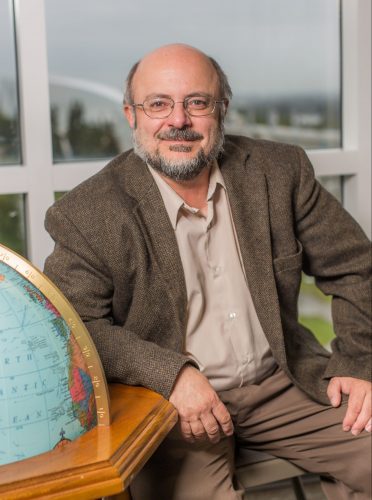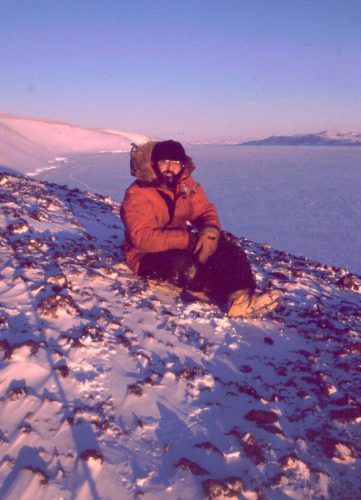BLaST Scientist of the Month: Michael Castellini
December 2, 2020

Michael Castellini has been named the Biomedical Learning and Student Training program's Scientist of the Month for December 2020.
Castellini’s life in scientific research spans five decades as a research faculty and many leadership positions at UAF and other institutions. He received his bachelor’s degree in biology from the University of California, San Diego; his doctorate in marine biology and his first postdoc at Scripps Institution of Oceanography at UCSD; and further postdoc work at the University of British Columbia Vancouver. He arrived at UAF in 1989 and has served as the senior director of the BLaST Research Enrichment Core since 2016. Castellini is retiring this December after almost 50 years in research, authorship and service.
Castellini’s field focuses on comparative vertebrate physiology, biochemistry and behavioral adaptations in diving marine mammals and birds. Further research involved population health and response to climate change. His fascination with seals, whales, other marine mammals and seabirds has led him to join in on over 20 sea expeditions in the Antarctic and the Arctic polar regions.
In a recent interview with BLaST, he shared how he got started in science.
“I was always a science nerd, even in grade school. I was being groomed to be a lawyer, but I wanted to become a biologist. A friend of mine was a junior college biology teacher, and groups of us would go camping overnight in the deserts of California and Baja looking at bugs and all kinds of things in the desert.”
He credits this mentor as well as several others who helped him during his undergraduate years to really see himself out in the field studying science.
Highlights of his work includes presenting at the Sitka Whalefest since 1999, founding director of the Alaska SeaLife Center from 1995-1999, and being a main presenter at the “Polar Palooza” series from 2007-2009. Castellini was also integral in the startup of the Research Vessel Sikuliaq, a world-renowned research facility.
“I enjoy events that brings marine science to the public that is educational and fun," he said. "It is hard to find someone who understands how to talk to middle and high school students about science. What I do students is sort of paying it back to help young students to have that spark of interest in science.”
His work ethic and openness inspired many to enter the realm of scientific query, challenging themselves to do better and move forward in science discovery.
Castellini has mentored countless students statewide, nationally and internationally, with over 40 undergraduate and graduate student committees; and over 50 funded research projects. He connects with students easily and personably, giving expert advice to students’ success.
One of his favorite memories was being part of a 12-month expedition in the Antarctic

“The best time I have had in the field. If given a choice, I like to be on a wind-swept, usually cold beach with animals, whether it be seals, seabirds or penguins. It’s a challenge and inspiration to not feel totally alone conducting scientific research, but it’s special to be part of that process and really be able to take it all in.”
As noted in the 2013 Sitka Whalefest program, Castillini's favorite place in Alaska is the Forrester Island complex, "about 70 miles southwest offshore of Ketchikan and as far south in the Alaska panhandle as you can get…the islands are covered in Steller sea lions, birds, berries and fortunately, no bears. He has spent wonderful weeks there working on sea lions and exploring elfin-like old-growth forests… just amazing.” (Sitka Whalefest program, 2013)
The Biomedical Learning and Student Training program at UAF highlights scientists from all biomedical fields through their Scientist of the Month articles. These articles are shared across all University of Alaska Fairbanks and University of Alaska Southeast rural campuses, Iļisaġvik College, and with BLaST’s partners: Fort Lewis College, Diné College, Salish Kootenai College and Alaska Pacific University.
BLaST is supported by the NIH Common Fund, through the Office of Strategic Coordination, Office of the NIH Director with the linked awards: TL4GM118992, RL5GM118990, UL1GM118991. For more information on BLaST students, staff, and faculty, please visit their website: http://alaska.edu/blast/. Any questions about this article, please contact Amy Topkok, BLaST reporting and outreach coordinator, at aktopkok@alaska.edu.


